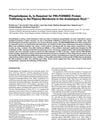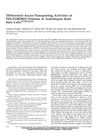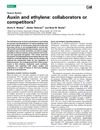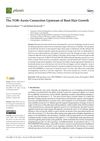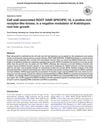Functional Identification of the Phosphorylation Sites of Arabidopsis PIN-FORMED3 for Its Subcellular Localization and Biological Role
April 2012
in “
The Plant Journal
”
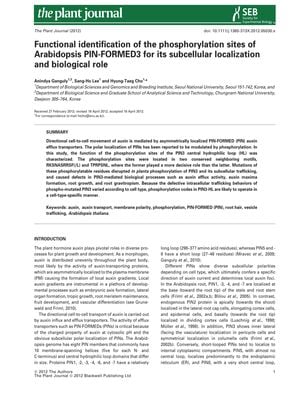
TLDR Phosphorylation of certain parts of the PIN3 protein is crucial for its role in plant root growth and response to gravity.
The study focused on the phosphorylation sites within the central hydrophilic loop of the Arabidopsis PIN-FORMED3 (PIN3) protein and their significance in the protein's subcellular localization and biological functions. It was discovered that mutations in the phosphorylatable residues of the M3 region of PIN3 led to changes in the protein's subcellular trafficking and expression patterns, which in turn affected auxin distribution, root growth, and gravitropism. Specifically, the M3PIN3 mutants showed a lack of expression in certain root cells, abnormal cell division, shorter root meristems, and a 40% inhibition in root growth. The study concluded that phosphorylation of specific serine residues within the M3 region is critical for PIN3's function in auxin transport and related developmental processes, and that these phosphorylation sites are essential for the proper functioning of PIN3 in a cell-type-specific manner. The exact number of plants or samples used in the study was not provided.
